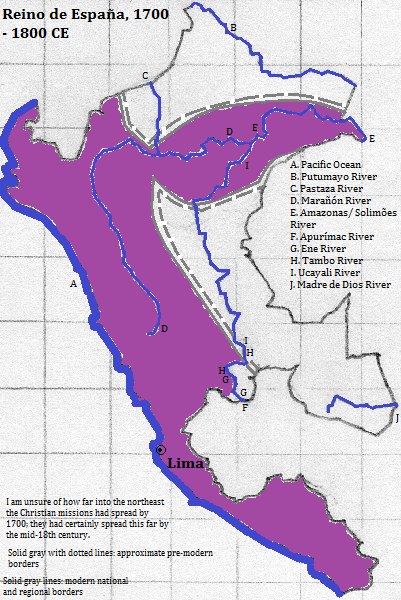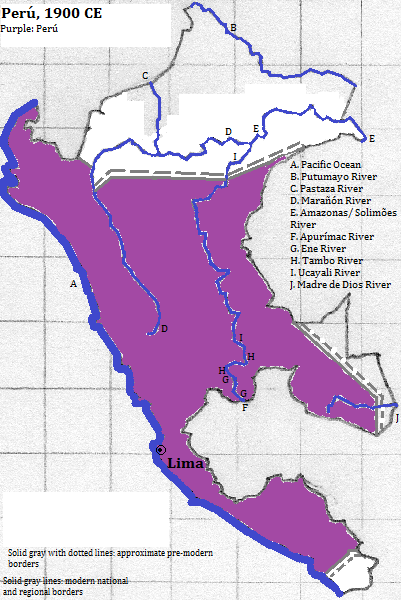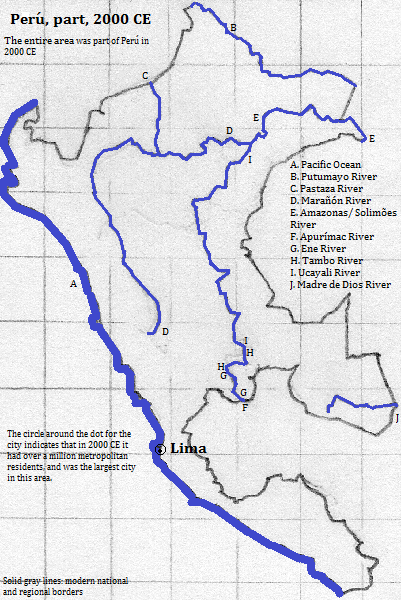
Huaca Pucllana pyramid (Lima Culture), Miraflores District of Lima, Perú
| To Duval Family Home Page | South America |
| To Chris Home Page | Hispano-America |
| To Earth (Geography Home Page) | Hispanic Peru |
| Peru |
Lima, Perú's capital, is located along the nation's central coast. The center is by the Rimac River but the city extends to two other river valleys. The metropolitan area extends inland to include the archaeological site of Cajarmarquilla and northwestward to include the port of Callao. The metropolitan population is 8.5 million
UNESCO honors the city center as a World Heritage Site, recognizing the many Baroque buildings from the colonial era (Torre Tagle Palace, San Francisco Convent) as well as the 19th century Art Nouveau Casa Courret.
The Jorge Chávez International Airport is one of South America's busiest.
There have been settlements in the city and its metropolitan area since the first millenium. The Cajamarquilla site was abandoned long before the Spanish arrived to found the colonial city.
| Year | Population | Political entity |
| 1400 CE | 40,000| Ichma culture | |
| 1700 CE | 37,000| Reino de España (Spanish Empire) | |
| 1800 CE | 54,000| Reino de España (Spanish Empire) | |
| 1900 CE | 122,000| Perú | |
| 2000 CE | 8,500,000| Perú | |

Huaca Pucllana pyramid (Lima Culture), Miraflores District of Lima, Perú




1. 2007 figure from the side bar of http://en.wikipedia.org/wiki/Lima, accessed 3/17/2014.
2. 2012 estimate from world-gazetteer.com, accessed 2/6/2013.
3. Emporis.com, accessed 3/17/2014.
4. Holy or Saint Rose in English.
5. UNESCO, World Heritage Sites (Firefly Books, 2010).
6. http://en.wikipedia.org/wiki/List_of_the_busiest_airports_in_South_America, accessed 2/25/2014.
7. Estimate for Cajamarquilla in 1400 and Lima in 1700 in Tables of the 'Cities of the Americas,' in Tertius Chandler, Four Thousand Years of Urban Growth, 2nd ed. (The Edwin Mellen Press, 1987). In 1400 Cajamarquilla (by whatever name it went by) was the largest city in what is now the Spanish-speaking part of Perú.
8. The political entity and its name is unknown.
9. ibid., "Tables of the World's Largest Cities." Lima was the largest city in the area from 1700 on.